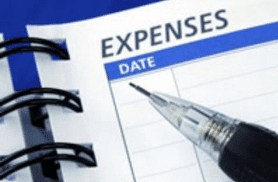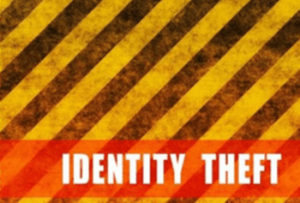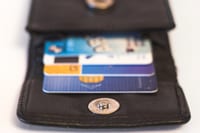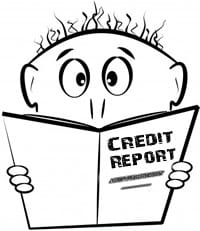 Consider paying your bills annually. Most times paying once a year (or even twice a year) could save you money. For example, Amazon Prime is $14,99 / month versus $149.99 annually – that’s a savings of $30.88. We pay our auto insurance annually to save money. #JillRussoFoster #FinancialLiteracyMonth
Consider paying your bills annually. Most times paying once a year (or even twice a year) could save you money. For example, Amazon Prime is $14,99 / month versus $149.99 annually – that’s a savings of $30.88. We pay our auto insurance annually to save money. #JillRussoFoster #FinancialLiteracyMonth
Financial Literacy Month #17
 According to LifeLock, 84% of people’s information is on the dark web. Is yours? Think about how you will protect yourself and your information. How often do you check your bank accounts? How often do you check your credit card accounts? You can monitor all this yourself by checking regularly. We check our accounts once per week and we have chosen to freeze our credit reports. #JillRussoFoster #FinancialLiteracyMonth
According to LifeLock, 84% of people’s information is on the dark web. Is yours? Think about how you will protect yourself and your information. How often do you check your bank accounts? How often do you check your credit card accounts? You can monitor all this yourself by checking regularly. We check our accounts once per week and we have chosen to freeze our credit reports. #JillRussoFoster #FinancialLiteracyMonth
Financial Literacy Month #16
 Like Capital One says, What’s in your wallet? Could you tell me everything that is in your wallet right now? If you were to lose your wallet today, how would you know what to cancel and replace. Clean out your wallet and carry only the minimum you require. You should never carry your social security card, your PIN numbers / passwords, blank check(s), passport unless you need to use them that day. Identity theft is on the rise. Protect yourself. #JillRussoFoster #FinancialLiteracyMonth
Like Capital One says, What’s in your wallet? Could you tell me everything that is in your wallet right now? If you were to lose your wallet today, how would you know what to cancel and replace. Clean out your wallet and carry only the minimum you require. You should never carry your social security card, your PIN numbers / passwords, blank check(s), passport unless you need to use them that day. Identity theft is on the rise. Protect yourself. #JillRussoFoster #FinancialLiteracyMonth
Financial Literacy Month #12
 According to Lending Tree, consumer debt is up 7% over last year and has hit $1.27 trillion. Do you have credit card debt? If you carry a balance, call your credit card company and ask for a lower interest rate. Lending Tree also stated that 76% of people who asked we given a lower rate. #JillRussoFoster #FinancialLiteracyMonth
According to Lending Tree, consumer debt is up 7% over last year and has hit $1.27 trillion. Do you have credit card debt? If you carry a balance, call your credit card company and ask for a lower interest rate. Lending Tree also stated that 76% of people who asked we given a lower rate. #JillRussoFoster #FinancialLiteracyMonth
Financial Literacy Month #4
 Curious about your credit score? You can get a close approximation of your score through some bank and credit card websites or through the credit reports bureaus Quizzle, Credit Karma or Credit Sesame. These are all free to see an approximation of your credit score. #JillRussoFoster #FinancialLiteracyMonth
Curious about your credit score? You can get a close approximation of your score through some bank and credit card websites or through the credit reports bureaus Quizzle, Credit Karma or Credit Sesame. These are all free to see an approximation of your credit score. #JillRussoFoster #FinancialLiteracyMonth
Financial Literacy Month #3
 When was the last time you viewed your credit report? Check out your free report at www.AnnualCreditReport.com today. According to the Federal Trade Commission, 1 in 5 people have an error on one or more their reports. Errors can make a difference on getting approved or declined for credit requests and what interest rate you are offered. #JillRussoFoster #FinancialLiteracyMonth
When was the last time you viewed your credit report? Check out your free report at www.AnnualCreditReport.com today. According to the Federal Trade Commission, 1 in 5 people have an error on one or more their reports. Errors can make a difference on getting approved or declined for credit requests and what interest rate you are offered. #JillRussoFoster #FinancialLiteracyMonth
What’s In Your Wallet?
As we are at the start of the new year, I wanted to share one of the things I do each and every year. 
I copy everything in my wallet. Many years ago, my purse was stolen on a Saturday night. I had to recall every item in my wallet. Never again! The thief charged hundreds at the gas station and even more at a local restaurant. No, I wasn’t responsible for any of the charges, but it was still a pain to close out accounts, open new opens, change all the automatic charges that happen to my credit card.
Now, I make a copy of all the items (drivers license, credit cards, medical cards and anything else). To make sure you don’t eave items in the copier, I only copy the front of each card. Then with the space in between each item, I write the phone number and website of the item. This way you won’t leave them in the copier. This may seem old school, but I can’t tell you the times I have referred to this list.
Also, here is a link to an article from AARP about what not to keep in your wallet.
Have You Refinanced Your Mortgage?
Refinancing a mortgage is a big decision involving lots of questions that you need to think about. 
- How long do you plan on staying in the home?
- Why do you want to refinance?
- Do you just want a lower rate and/or shorter term?
- Do you want to take out cash to do something (home improvements, pay for kid’s college, etc.)?
These are some of the questions you need to think about to determine if refinancing is right for you.
For those of you that don’t remember, I was in the mortgage business for 10+ years. Well, lots has changed since I left the industry. So, we decided to refinance to a shorter term and a fixed rate. We had a 1-year adjustable rate with a Treasury bill index (a stable index) for the long term – they don’t offer that index anymore. We were dead set against getting a LIBOR index adjustable, as that index will be going away. For us, it had to be a shorter term and lower rate. Well, now was the time!
After answering all the above questions and more, we refinanced and shortened our term to 15 years with a fixed rate of 2.375%. The process was long, as the industry is overwhelmed. For us, we started the mortgage application process though closing took us 101 days. You’ll need your patience and to be organized with all your documents available. Much longer than I remember.
All in all this worked for us and it can for you too, with some patience.
Protect Yourself

This weekend started off like any other weekend – running errands including a trip to the gas station. Everything seemed like a regular weekend. But here we are the next day and I go into my wallet and my ATM / debit card isn’t there.
First thing I do is to check my wallet, maybe I put in in another spot or maybe it’s loose in my purse. No such luck. Next, I go online to my bank account to see what transactions have posted, nothing that I didn’t recognize – that’s good. I immediately call my bank to ask them to freeze my card. This will give me a chance to look for it without any liability.
ATM / debit cards are different than credit cards when it comes to your liability. The most important thing to do is to contact your bank to stop your liability. If you contact your bank immediately before any unauthorized transactions occur, you have zero liability. The longer you wait, the more liability you have. Form more information, check out the Federal Trade Commission information page.
If I don’t find it today, I will call and cancel it and get a replacement card. Wish me luck in the search for my card.
Should you pay off your credit card debt with a mortgage refinance?
In our last Quick Tips, we talked about refinancing your mortgage. I hope you did your homework. If you decided that refinancing is right for you, you may be tempted to pay off your other debts by financing them into your mortgage.
Should you do it? Follow these steps to find out.
List all your debts
If debt is a problem for you, take a closer look. Make 5 columns:
Column 1: Write down the name of each creditor (credit card companies, auto dealership, bank, hospital, etc.)
Column 2: Write down why you took a loan or used a credit card. This will help you see how you came to be in debt. Were these essential expenses like a car or a hospital emergency? Or, were these items you could have saved for, like a vacation, clothes, or furniture.
Column 3. Write down the interest rate.
Column 4. Write down the current payment amount.
Column 5. Write down when it will be paid off at the current payment rate.
I know that this can be scary, but you need to know. Congratulate yourself for doing this. This is a huge step forward.
Why is it important to really look at your debt? If your debts just disappear into your mortgage, you could forget where they came from. Most people who consolidate their debt this way will have credit card debt again in just a few years.
Refinancing may not be the answer, but knowing how and why you spend will help you stay out of debt in the long run.
Consider the downside of consolidating your credit card debt into your mortgage. Credit card debt is unsecured, so you would be taking unsecured debt and betting your house on it. When you have credit card debt and can’t make payments, that’s a problem – but, your creditors cannot take your home. On the other hand, if you can’t make your mortgage payments, then you could lose your home in foreclosure. If you increased your mortgage loan in order to cover credit card debt, you could end up with a larger house payment – one that you can’t afford! That’s why I don’t recommend refinancing your unsecured debt into a mortgage.
Consider the long term outcome when refinancing secured debts into your mortgage.
Secured debt is a physical object that can be repossessed / foreclosed if you don’t pay: it could be a car, or even a home equity loan or line of credit. Here are three questions you should ask before making your decision:
1. If you combine your mortgage with your home equity will this mean you need to pay mortgage insurance? Mortgage insurance is added when the total amount of your mortgage is equal to, or over, 80% of your home’s appraised value. That will increase your monthly mortgage payment.
2. Will you need the home equity line in the future? It will be difficult to get a new line in these economic times.
3. Is it better to pay off your debts yourself, and have a tight budget for the short term? Or combine them with your refinance and have a bigger mortgage in the long term?
Think long and hard about what you put into your new mortgage. Consult with your tax preparer for an objective opinion.
- 1
- 2
- 3
- …
- 18
- Next Page »